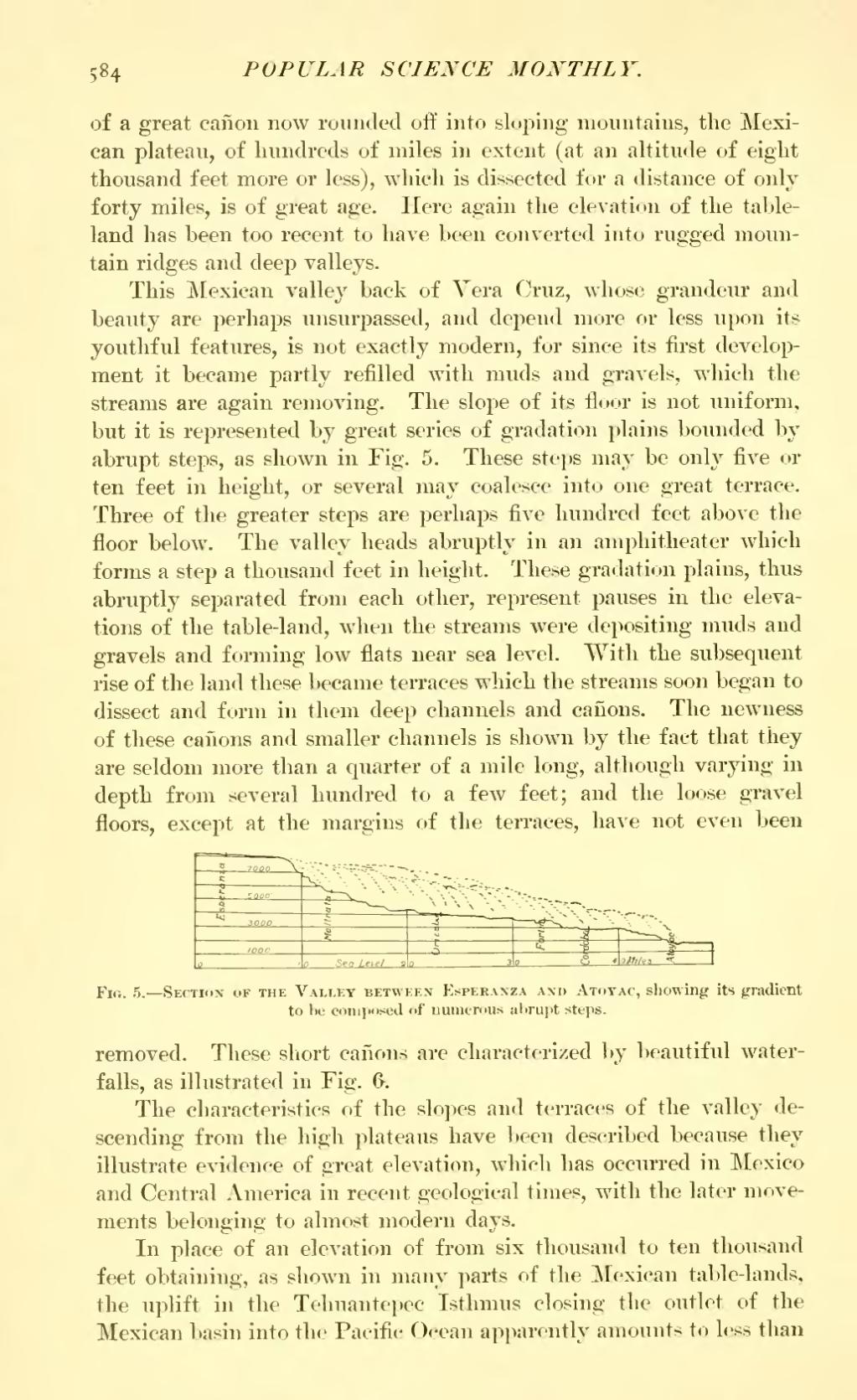of a great cañon now rounded off into sloping mountains, the Mexican plateau, of hundreds of miles in extent (at an altitude of eight thousand feet more or less), which is dissected for a distance of only forty miles, is of great age. Here again the elevation of the tableland has been too recent to have been converted into rugged mountain ridges and deep valleys.
This Mexican valley back of Vera Cruz, whose grandeur and beauty are perhaps unsurpassed, and depend more or less upon its youthful features, is not exactly modern, for since its first development it became partly refilled with muds and gravels, which the streams are again removing. The slope of its floor is not uniform, but it is represented by great series of gradation plains bounded by abrupt steps, as shown in Fig. 5. These steps may be only five or ten feet in height, or several may coalesce into one great terrace. Three of the greater steps are perhaps five hundred feet above the floor below. The valley heads abruptly in an amphitheater which forms a step a thousand feet in height. These gradation plains, thus abruptly separated from each other, represent pauses in the elevations of the table-land, when the streams were depositing muds and gravels and forming low flats near sea level. With the subsequent rise of the land these became terraces which the streams soon began to dissect and form in them deep channels and cañons. The newness of these cañons and smaller channels is shown by the fact that they are seldom more than a quarter of a mile long, although varying in depth from several hundred to a few feet; and the loose gravel floors, except at the margins of the terraces, have not even been

Fig. 5.—Section of the Valley between Esperanza and Atoyac, showing its gradient to he composed of numerous abrupt steps.
removed. These short cañons are characterized by beautiful waterfalls, as illustrated in Fig. &.
The characteristics of the slopes and terraces of the valley descending from the high plateaus have been described because they illustrate evidence of great elevation, which has occurred in Mexico and Central America in recent geological times, with the later movements belonging to almost modern days.
In place of an elevation of from six thousand to ten thousand feet obtaining, as shown in many parts of the Mexican table-lands, the uplift in the Tehuantepec Isthmus closing the outlet of the Mexican basin into the Pacific Ocean apparently amounts to less than
